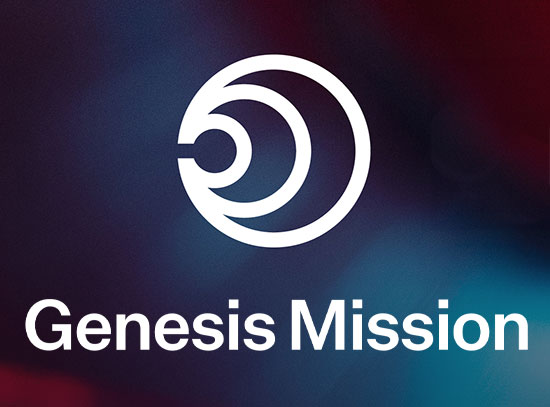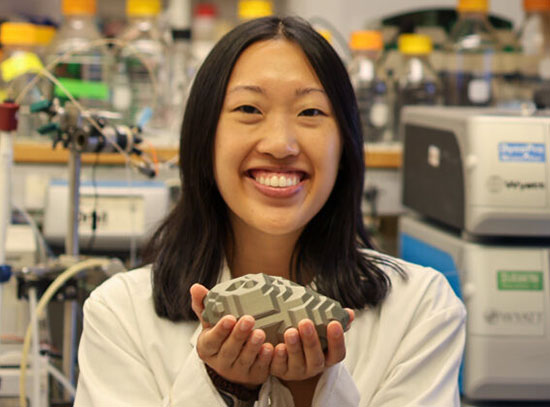Studying Plasmonics in Graphene Cavities
April 9, 2025
 enlarge
enlarge
The experimental setup of graphene on RuCl3. The graphene undergoes a charge transfer process that dopes it with holes (positively charged vacancies). Incoming light (red pulse) couples to a metallic tip and then is backscattered (purple pulse). Inset: representative data of THz SPPs in a graphene cavity
The Science
Researchers observed surface plasmon polaritons (SPPs) in graphene cavities on a ruthenium chloride (RuCl3) substrate.
The Impact
Shaping graphene into cavity structures enables new ways to study SPPs – collective charge oscillations at the surface of a 2D metal dressed with electromagnetic waves – potentially driving SPP-based photonic and optoelectronic applications.
Summary
Surface plasmon polaritons (SPPs) are highly confined, electromagnetic waves that travel along the surface of a two-dimensional metal, carried by collective charge oscillations. They are the result of a fascinating interaction between light and matter that can tell researchers a lot about the electrodynamic behavior of the host materials.
In particular, SPPs in graphene, a 2D form of carbon, have been extensively studied over the past decade. These studies have revealed several interesting electronic and magnetic phenomena, collectively suggesting that engineered graphene devices could be a powerful platform for tunable optoelectronic and plasmonic devices.
In this work, a collaboration of researchers engineered and studied a layered structure consisting of graphene — patterned with square cavities of varying size using the tip of an atomic force microscope — on top of a substrate of the insulator ruthenium chloride (RuCl3). This system is intriguing because there is a massive charge transfer that takes place between the two materials, leaving the graphene heavily doped with electron vacancies known as holes, which behave as positively charged current carriers, and the top of the RuCl3 layer heavily doped with electrons.
The researchers were interested in how the graphene/RuCl3 system would respond to light in the terahertz (THz) range, which covers a region bridging the far-infrared and microwave regions of the electromagnetic spectrum. They then measured that response using nanoimaging and nanospectroscopy in a variety of experiments with several samples, a subset of which were performed at the Magnetic, Ellipsometric, Time-resolved Infrared and Nanospectroscopies (MET) beamline at the National Synchrotron Light Source II (NSLS-II). NSLS-II is a U.S. Department of Energy (DOE) Office of Science user facility located at DOE’s Brookhaven National Laboratory.
The group clearly observed THz SPPs in the cavities and were also able to measure their wavelength and scattering rate. Furthermore, they determined that those values matched the theoretical predictions. The study shows that shaping graphene into a custom grid of square cavities of a variety of different sizes enables SPPs to be observed and measured in heavily hole-doped graphene, which are results that are largely not possible with other experimental techniques.
Download the research summary slide (PDF)
Related Links
Charge Transfer Plasmonics in Bespoke Graphene/α-RuCl3 Cavities
Contact
Rocco A. Vitalone
Columbia University
rav2140@columbia.edu
D.N. Basov
Columbia University
db3056@colubmia.edu
Publications
Rocco A. Vitalone, Bjarke S Jessen, Ran Jing, Daniel J. Rizzo, Suheng Xu, Valerie Hsieh, Matthew Cothrine, David G. Mandrus, Lukas Wehmeier, G. Lawrence Carr, Valentina Bisogni, Cory R. Dean, James C. Hone, Mengkun Liu, Michael I. Weinstein, Michael M. Fogler, D. N. Basov. "Charge Transfer Plasmonics in Bespoke Graphene/α-RuCl3 Cavities." ACS Nano 2024, 18, 43, 29648–29657
Funding
Research on charge transfer plasmons is solely supported by DOE-BES DE-SC0018426 Research on the development of nanoimaging instrumentation and heterostructure assemblies is solely supported as part of Programmable Quantum Materials, an Energy Frontier Research Center funded by the U.S. Department of Energy (DOE), Office of Science, Basic Energy Sciences (BES), under award DE-SC0019443. For synchrotron-based infrared nanospectroscopy, this research used the MET beamline of the National Synchrotron Light Source II, a U.S. Department of Energy (DOE) Office of Science User Facility operated for the DOE Office of Science by Brookhaven National Laboratory under Contract no. DE-SC0012704. The SINS measurements were funded by the U.S. Department of Energy, Office of Science, National Quantum Information Science Research Centers, Co-design Center for Quantum Advantage (C2QA) under contract number DE-SC0012704. M.I.W. was supported in part by NSF grants DMS-1908657, DMS-1937254, and Simons Foundation Math + X Investigator Award\# 376319 Work at ORNL was supported by the U.S. Department of Energy, Office of Science, Basic Energy Sciences, Materials Sciences and Engineering Division.
2025-22480 | INT/EXT | Newsroom









